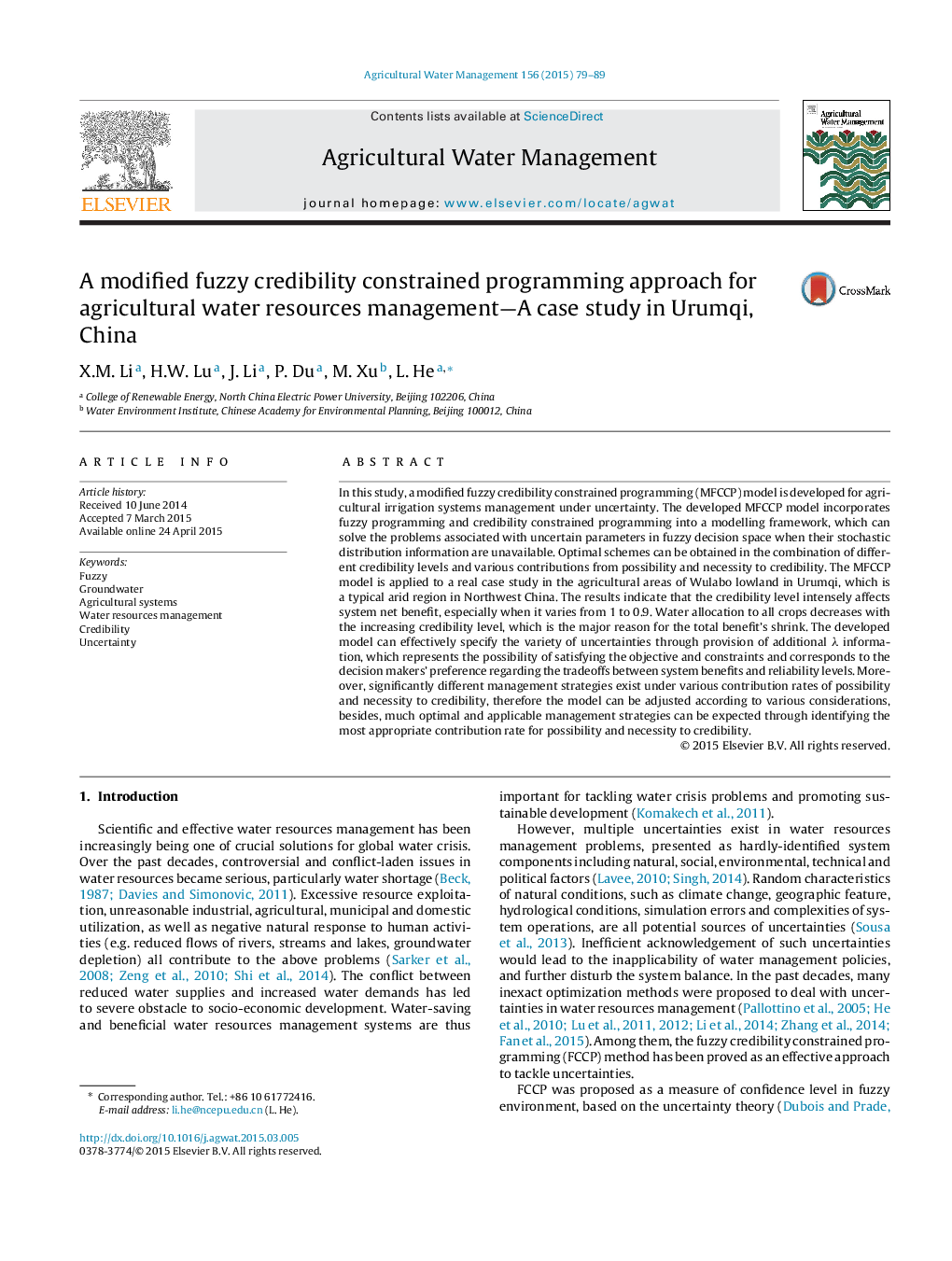| Article ID | Journal | Published Year | Pages | File Type |
|---|---|---|---|---|
| 4478475 | Agricultural Water Management | 2015 | 11 Pages |
•A modified fuzzy credibility constrained programming (MFCCP) model is developed.•MFCCP incorporates fuzzy programming and credibility constrained programming.•MFCCP is applied to a subcatchment of the Mooring ulla depression in Urumqi, China.•Optimal management strategies can be identified with improved credibility offered.
In this study, a modified fuzzy credibility constrained programming (MFCCP) model is developed for agricultural irrigation systems management under uncertainty. The developed MFCCP model incorporates fuzzy programming and credibility constrained programming into a modelling framework, which can solve the problems associated with uncertain parameters in fuzzy decision space when their stochastic distribution information are unavailable. Optimal schemes can be obtained in the combination of different credibility levels and various contributions from possibility and necessity to credibility. The MFCCP model is applied to a real case study in the agricultural areas of Wulabo lowland in Urumqi, which is a typical arid region in Northwest China. The results indicate that the credibility level intensely affects system net benefit, especially when it varies from 1 to 0.9. Water allocation to all crops decreases with the increasing credibility level, which is the major reason for the total benefit's shrink. The developed model can effectively specify the variety of uncertainties through provision of additional λ information, which represents the possibility of satisfying the objective and constraints and corresponds to the decision makers’ preference regarding the tradeoffs between system benefits and reliability levels. Moreover, significantly different management strategies exist under various contribution rates of possibility and necessity to credibility, therefore the model can be adjusted according to various considerations, besides, much optimal and applicable management strategies can be expected through identifying the most appropriate contribution rate for possibility and necessity to credibility.
